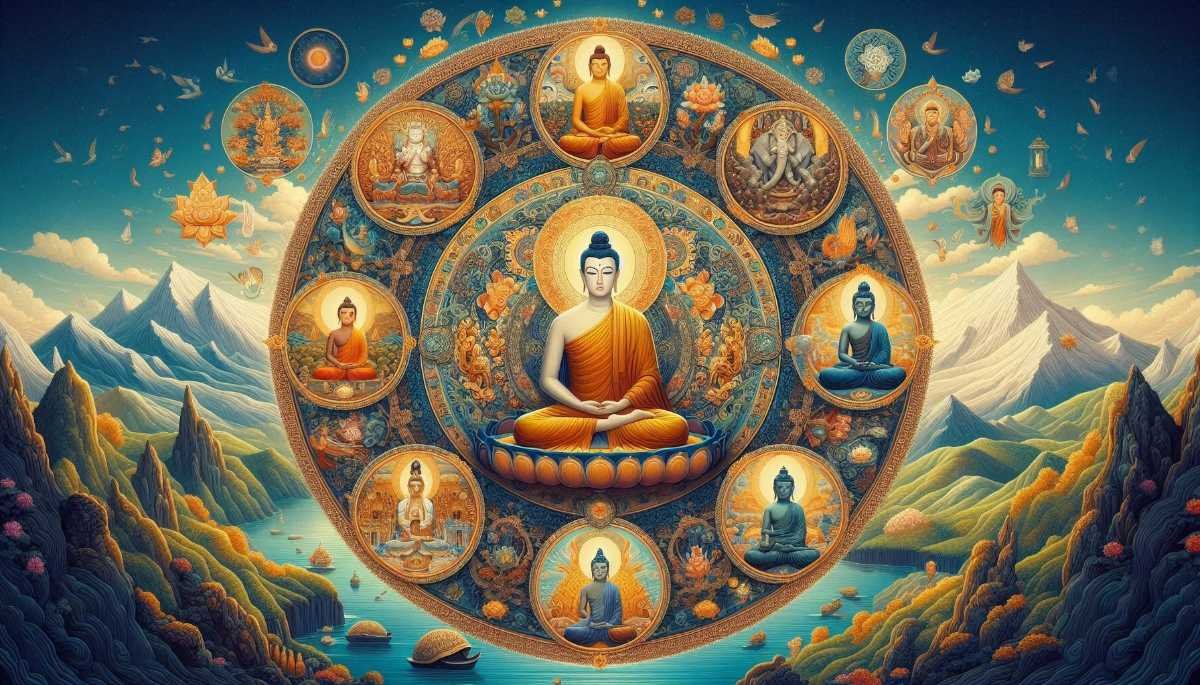Buddhism is one of the oldest spiritual traditions in the world, with millions of followers across various cultures. Over the centuries, it has evolved into different branches, each with unique interpretations, practices, and philosophies. This article explores the major types of Buddhism, their teachings, and how they differ from one another.
The Three Main Branches of Buddhism
Buddhism is broadly categorized into three primary branches:
1. Theravāda Buddhism: The School of the Elders
Origins and Beliefs
Theravāda, often considered the oldest and most traditional form of Buddhism, is mainly practiced in Sri Lanka, Thailand, Myanmar, Cambodia, and Laos. It adheres strictly to the teachings of the Pāli Canon and emphasizes the original words of the Buddha.
Key Features
- Focus on monastic life and meditation.
- The ultimate goal is attaining Nirvana, breaking free from the cycle of rebirth.
- Strong emphasis on individual enlightenment through meditation and ethical living.
Major Practices
- Vipassana (Insight Meditation): A practice that develops mindfulness and wisdom.
- Sīla (Morality): Living a virtuous life following the Five Precepts.
- Dāna (Generosity): Encouraging laypeople to support monks and the Buddhist community.
2. Mahāyāna Buddhism: The Great Vehicle
Origins and Beliefs
Mahāyāna Buddhism emerged around the 1st century CE and spread to China, Japan, Korea, and Vietnam. It introduces a more flexible approach to Buddhist teachings, emphasizing compassion and helping others attain enlightenment.
Key Features
- Belief in Bodhisattvas, enlightened beings who delay their Nirvana to help others.
- Emphasis on compassion (Karunā) and wisdom (Prajñā).
- Inclusion of various scriptures beyond the Pāli Canon, such as the Lotus Sūtra and Heart Sūtra.
Major Schools of Mahāyāna Buddhism
- Zen Buddhism (Japan & China): Focuses on meditation (Zazen) and direct experience over scriptures.
- Pure Land Buddhism (China & Japan): Centers on devotion to Amitābha Buddha for rebirth in the Pure Land.
- Nichiren Buddhism (Japan): Emphasizes chanting the title of the Lotus Sūtra (Nam-myoho-renge-kyo).
3. Vajrayāna Buddhism: The Diamond Vehicle
Origins and Beliefs
Also known as Tantric Buddhism, Vajrayāna evolved from Mahāyāna Buddhism and is primarily practiced in Tibet, Bhutan, and Mongolia. It incorporates esoteric teachings, rituals, and mantras to accelerate the path to enlightenment.
Key Features
- Utilization of mantras, mandalas, and mudras.
- Strong focus on guru-disciple relationships.
- The belief that enlightenment can be achieved within a single lifetime.
Major Schools of Vajrayāna Buddhism
- Tibetan Buddhism: Includes various sub-schools like Gelug, Nyingma, Kagyu, and Sakya.
- Shingon Buddhism (Japan): Incorporates esoteric teachings and rituals.
Differences Between Theravāda, Mahāyāna, and Vajrayāna Buddhism
| Feature | Theravāda | Mahāyāna | Vajrayāna |
|---|---|---|---|
| Main Goal | Nirvana for oneself | Enlightenment for all beings | Attain enlightenment quickly |
| Key Practice | Meditation & monastic life | Compassion & devotion | Mantras & rituals |
| Sacred Texts | Pāli Canon | Mahāyāna Sūtras | Tantric texts & Mahāyāna Sūtras |
| Bodhisattva Ideal | Not emphasized | Central concept | Strong emphasis |
| Regions | Sri Lanka, Thailand, Myanmar | China, Japan, Korea | Tibet, Bhutan, Mongolia |
Other Minor Buddhist Traditions
Aside from the three main branches, Buddhism has also adapted into several unique traditions, including:
1. New Buddhist Movements
- Navayāna Buddhism: A modern reinterpretation of Buddhism initiated by Dr. B.R. Ambedkar in India, emphasizing social equality.
- Engaged Buddhism: A movement that applies Buddhist ethics to social justice and activism.
2. Folk and Indigenous Buddhist Practices
- Shin Buddhism (Japan): A Pure Land school focusing on faith in Amida Buddha.
- Thai Forest Tradition: A Theravāda movement emphasizing meditation and monastic discipline.
Conclusion
Buddhism is a vast and diverse tradition with many branches, each offering different paths to enlightenment. Whether through meditation, compassion, or esoteric rituals, all Buddhist schools aim to end suffering and achieve spiritual liberation. Understanding these types of Buddhism allows for a deeper appreciation of this ancient yet evolving philosophy.
